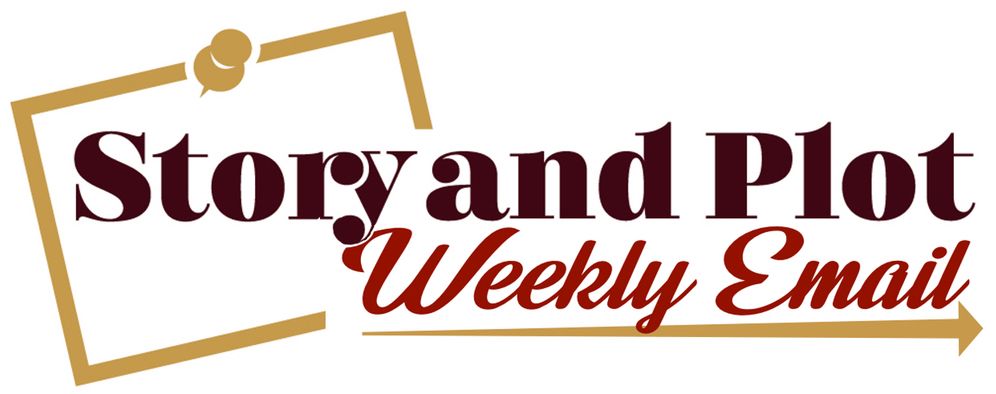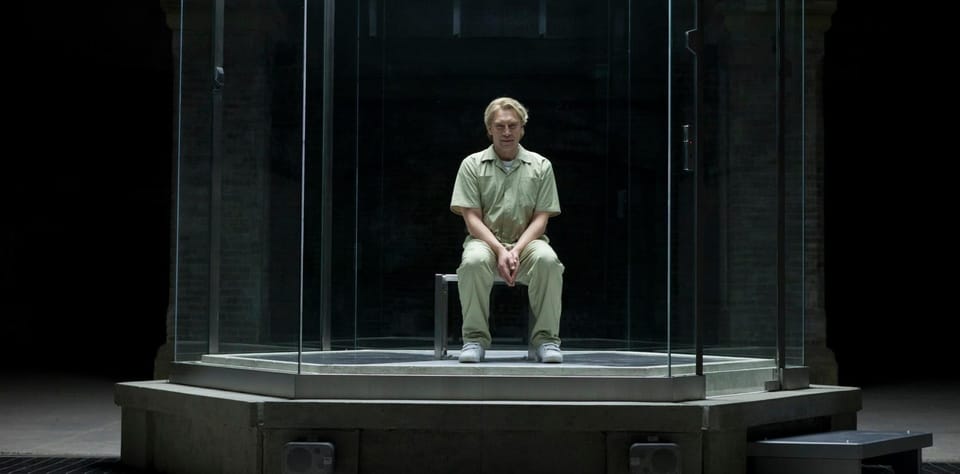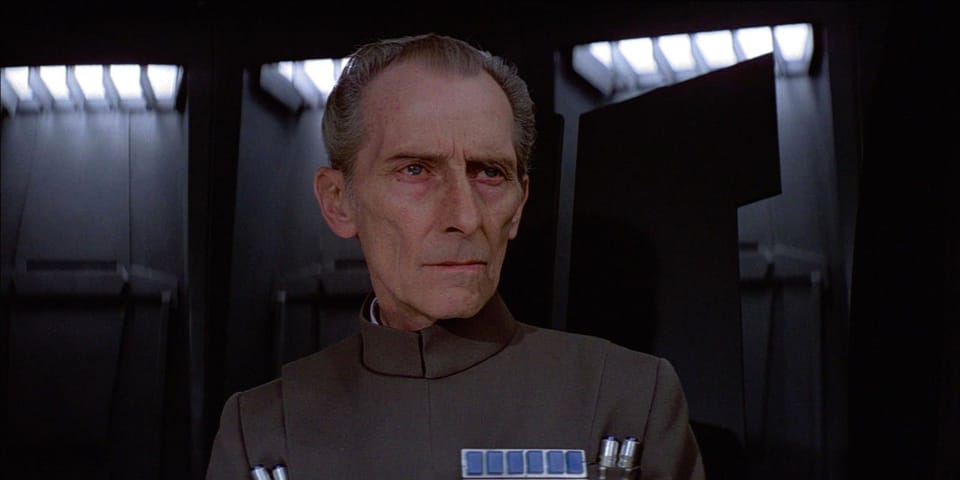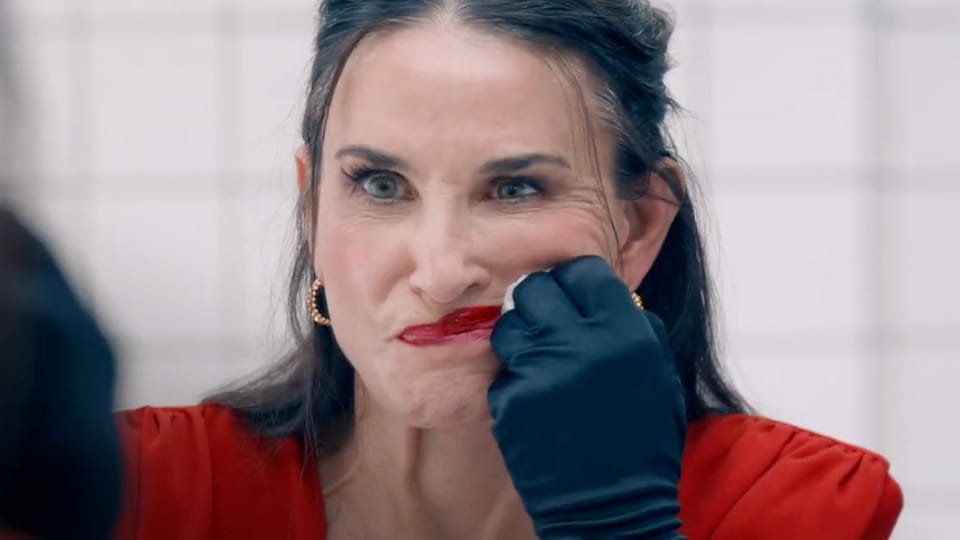The Midpoint
An event at the midpoint of the movie that reverses what was previously believed to be true, changes the stakes, or otherwise creates a new environment or given circumstances for the protagonist

The Story and Plot Weekly Email is published every Tuesday morning. Don't miss another one.
A few weeks ago, I was a guest on Ben Blacker's podcast, The Writer's Panel. This was the first podcast I've been a guest on where I got to talk with another WGA writer to discuss process.
If you get a chance, I recommend listening to it. There's some good stuff in there, and you will get a better idea of my approach (if you don't already through these emails.)
Unfortunately, our time was limited, so we had to cut it short, but I wanted to keep diving into Act 2, especially the midpoint.
I have often talked about how awareness and appreciation of the midpoint was a huge stepping stone to my becoming a professional writer. My prioritization of it has only grown over the years.
WHAT IS THE MIDPOINT
I define the midpoint:
An event at the midpoint of the movie that reverses what was previously believed to be true, changes the stakes, or otherwise creates a new environment or given circumstances for the protagonist
This is pretty general. Perhaps too general. I mean, it's true. But I don't want it to just be true, I want it to be helpful.
As I mentioned to Ben, you can't really talk about Act 2 without talking about Act 1 and Act 3. It is all one story, after all. Each piece is interdependent.
I think this is where my teaching may be most unique. I built these definitions and processes to help reinforce this nature so that as you make certain decisions, each subsequent decision becomes easier and easier.
For example, the midpoint results from the fourth sequence, and that, in turn, dictates the nature of the sixth sequence.
So, when you decide upon your midpoint, you also narrow your options for other parts of your structure.
Like a crossword puzzle, the more you answer, the easier it gets.
So, instead of "What is a midpoint?"
Three other questions might be more helpful:
WHAT IS THE JOB OF THE MIDPOINT?
Like any structural device, the job is narrative momentum and emotional resonance (the job of structure itself).
The midpoint helps us avoid a long, protracted second act. It emotionally affects the protagonist and takes our story in a new, unseen direction.
It's like a trampoline bounce of narrative momentum into the movie's second half.
WHAT MAKES A GOOD MIDPOINT?
The best midpoints have three qualities:
- It relates directly to the dramatic question (rather than a subplot).
- It feels like a victory or a defeat.
- That victory or defeat is strong enough to create an emotional response from the protagonist(s) that changes their behavior.
HOW TO FIND YOUR MIDPOINT
The midpoint is usually the third or fourth structural choice I lock in when breaking a story. Sometimes it comes easy, and other times it's a slog.
If it's a slog for you, don't worry. There's a way to find it. Do not panic.
Remember, story is transformation.
If you want to know the story of any movie, look at who the characters are at the beginning and who they are at the end.
That's your story.
And the second act is where that transformation happens.
The midpoint is a crucial turning point in that transformation.
I call the 4th sequence, which ends with the midpoint as its final scene, "First Attempts." It is the first legitimate attempt to solve the problem.
This attempt to solve the problem will feel like a success or a failure. And this success or failure will happen at... the midpoint.
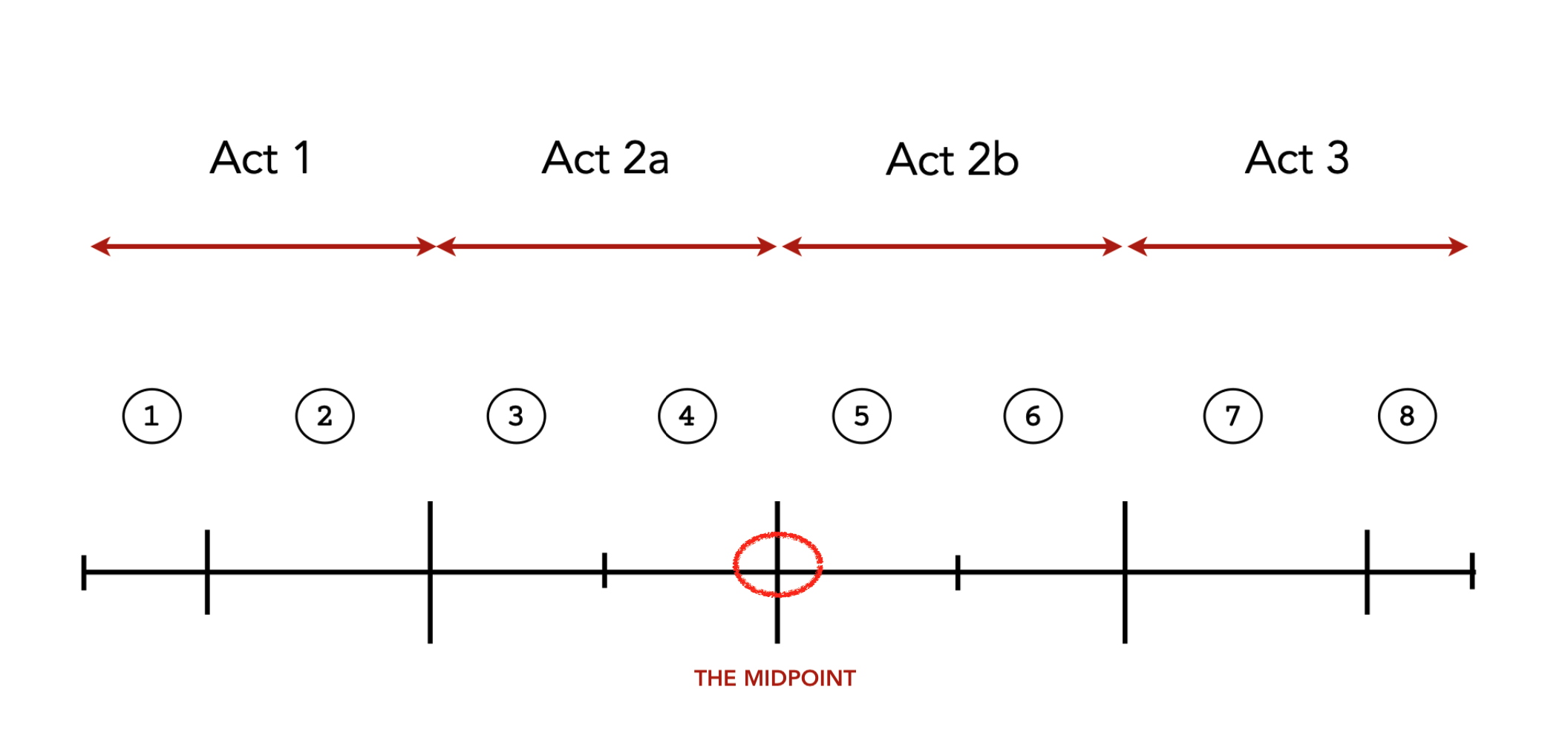
Here is what's even more important:
While the midpoint is the first legitimate attempt to solve the problem, it is also the last attempt to solve the problem as the person the protagonist was in Act 1.
This success or failure will affect them and accelerate their journey to become someone new, both in their physical choices and who they are.
Some examples:
In STAR WARS. In sequence 4, Luke and Obi-Wan's plan is to ride the Millennium Falcon to deliver R2 to Alderaan. But Alderaan is no longer there, and the Millennium Falcon is captured. Instead of delivering the R2 unit to Alderaan, our heroes must escape the Death Star.
L.A. CONFIDENTIAL. The three detectives think they solved their case. They worked inside the system, and they all get everything they wanted. The problem is none of them believe they got the right guys. Instead of enjoying the false success, they each pursue it outside the system.
In BRIDESMAIDS, Annie's new plan is to throw the most amazing bachelorette party in Las Vegas and best her new rival. But she mixes drugs with alcohol on the plane, and the trip is a disaster. Instead of being the maid of honor, she must confront how her life is falling apart.
Who is your protagonist, and where are they headed?
There are all kinds of ways to do a midpoint, so if you already know what your midpoint is going to be, great! You can reverse engineer Act 2A to get you there.
But if you are struggling, here are some things to think about:
First, consider who your character is at the beginning of Act 1. How do they solve problems? Brute force? Manipulation? Intellect? By proper procedures? Risk-averse? Desperation?
How does this inform their plan going through the 4th sequence (First Attempts) to solve the problem?
Don't overthink this. It doesn't have to be deep.
It can just be a rational plan that they think will work. John McClane in DIE HARD just wants to inform the police and does so at the midpoint. Naru in PREY just wants to follow the trail of the animal. She finds it.
It can also be more specific to the character, like in GROUNDHOG DAY where this awful person tries to use his knowledge of the future to seduce Rita. He fails. Or in RATATOUILLE, where Remi and Linguini want to fool people into thinking Linguini can cook! They do. Linguini becomes the toast of the town.
Launch them in a new direction
Next, whatever plan they have, it is going to succeed or fail in a way that is going to change the direction of their journey.
What we're doing with the midpoint is starting the protagonist's (or whoever changes) transformation in earnest. Sometimes, this growth is thrust upon them, like in STAR WARS; other times, we must destroy the old version first, like in BRIDESMAIDS or GROUNDHOG DAY.
The midpoint can be a success, like in RATATOUILLE, where they are celebrated, but the problems only multiply, and forces against them grow. It can be a failure, like THE AVENGERS, where the Chitauri surprise attack the bickering, unorganized version of the team.
Either way, this is when the old version of the protagonists starts to die as they are sent in a new, unexpected direction.
That death will be complete at the end of sequence 5, leading soon to the third act where they solve their problem in a very different way than how they tried to solve it in the movie's first half.
Don't forget the emotion.
The audience doesn't care about plot. They care about the emotional reaction to the plot. And the midpoint needs to evoke emotion. From us, and from the characters.
So, whatever your genre, fun or emotional currency, action, horror, comedy, drama. Make sure your midpoint delivers it.
That's it for this week!
Thank you for being a subscriber. And I always welcome help to spread the word.
I hope so much you get to do stuff you love.
In solidarity.
Tom
The Story and Plot Weekly Email is published every Tuesday morning. Don't miss another one.
When you're ready, these are ways I can help you:
WORK WITH ME 1:1
1-on-1 Coaching | Screenplay Consultation
TAKE A COURSE
Mastering Structure | Idea To Outline
